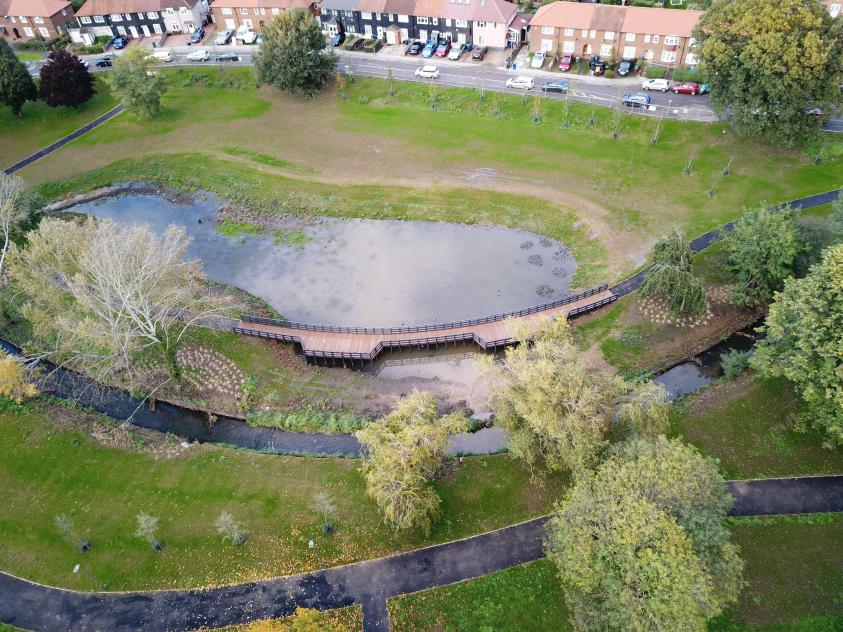Barnet Council will invest an ambitious £6million in flooding and drainage improvements in the next five years.

Silkstream Park
The money has been set aside as part of the newly introduced Local Flood Risk and Management Strategy (LFRMS) 2023-29, passed by the cabinet at a recent meeting.
The LFRMS highlights past instances of borough-wide flooding due to extreme rainfall, and how to address the challenges of the climate change emergency – declared by the council in 2022. The BarNET ZERO campaign has been launched to make the council net zero in carbon emissions by 2030 and for the borough as a whole by 2042.
The LFRMS sets out Barnet’s key strategic flood risk management objectives and presents an updated Action Plan for 2023-2029. It sets out the four key strategic objectives:
- FLOOD RESILIENCE: Take action to reduce flood risk and avoid economic damages, while delivering wider environmental and social benefits.
- ENGAGEMENT & EDUCATION: Engage and educate local residents and businesses to empower them to understand and reduce their own risk of flooding.
- PARTNERSHIP WORKING: Establish and maintain collaborative partnerships with internal and external stakeholders to facilitate effective information-sharing and maximise joint working opportunities.
- DEVELOPMENT & PLANNING: Steer development away from flood risk areas to protect these areas and ensure future development is sustainable in the context of climate change.
The strategy launches the first Online Flood Risk Mapping Tool which maps the risk of different sources of flooding within the borough supplemented with historic flood maps and hotspots.
Guidance for residents and developers is signposted within the LFRMS, with advice to residents on how to report flooding. It encourages developers to utilise natural flood management approaches.
The strategy provides details of works delivered as part of this capital budget programme. This includes the installation of smart water level sensors and gully monitors at 71 locations in the borough to generate warning systems of when flooding is expected. The strategy also includes a detailed Action Plan outlining the specific measures proposed to meet the Strategic Objectives from 2023 to 2029.
You can read the LFRMS and its Action Plan at: Local Flood Risk Management Strategy
Councillor Alan Schneiderman, Cabinet Member for Environment and Climate Change said:
“As a council, we care for people, our places, and the planet and the Local Flood Risk Management Strategy is an important part of this.
“Climate change is leading to record-breaking rainfall and contributing to increased flooding. The strategy will help our communities to become more flood resilient and it adopts a sustainable approach to flood risk management.
“Taking this approach will lead to wider environmental, biodiversity, health and social benefits.”
ATTACHED PHOTOS:
The new wetland area in Silkstream Park, which will reduce the risk of flooding to nearby areas.
